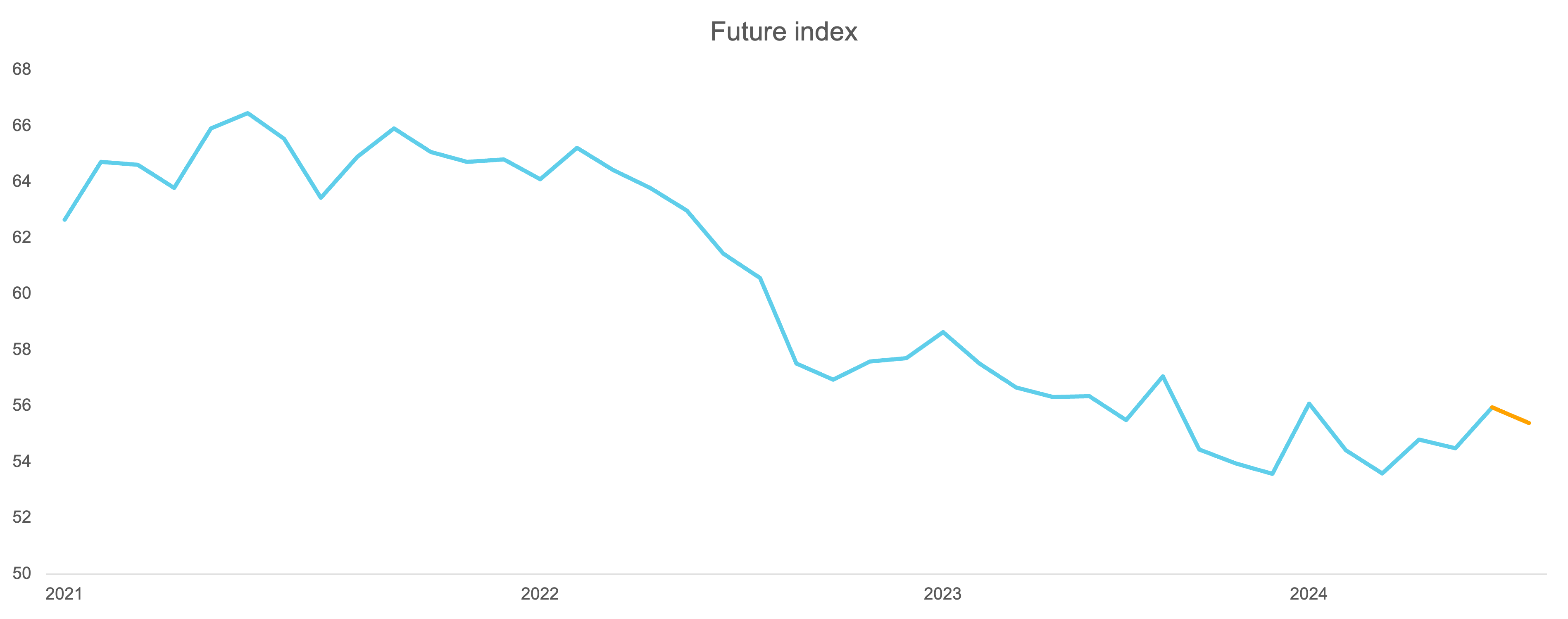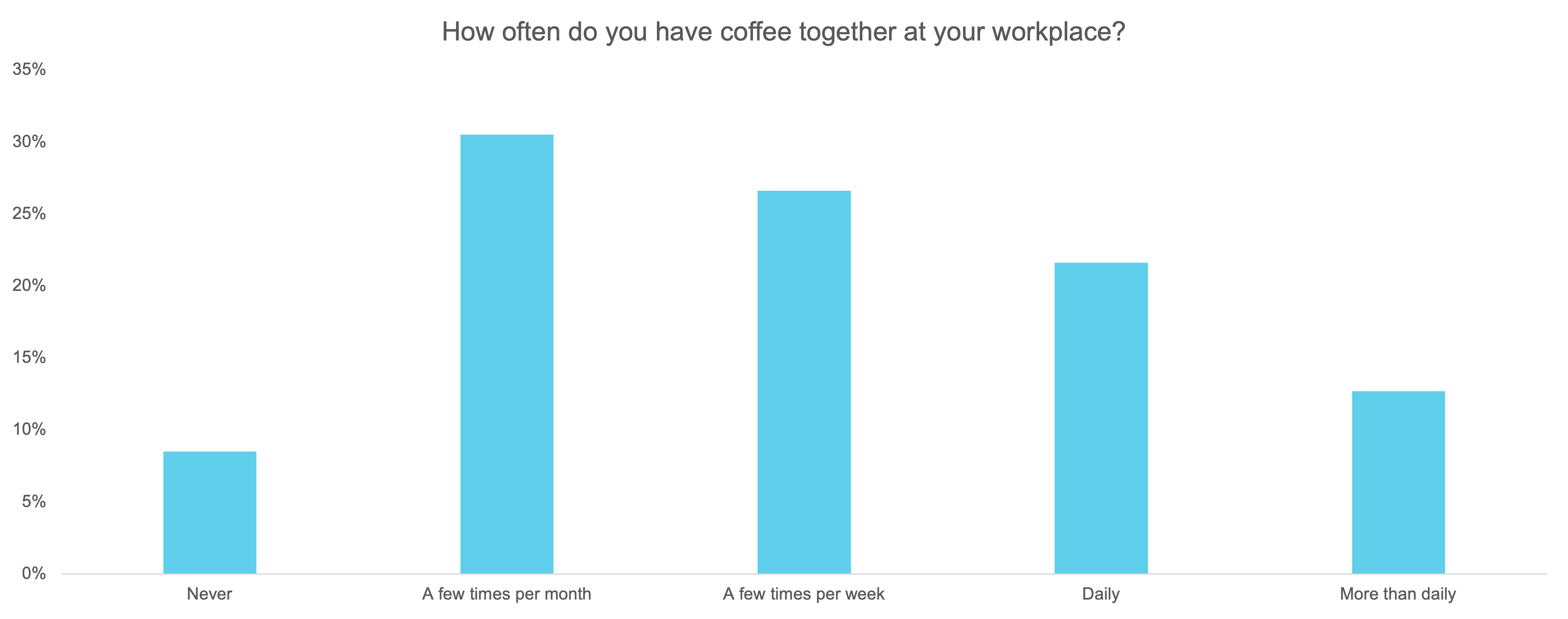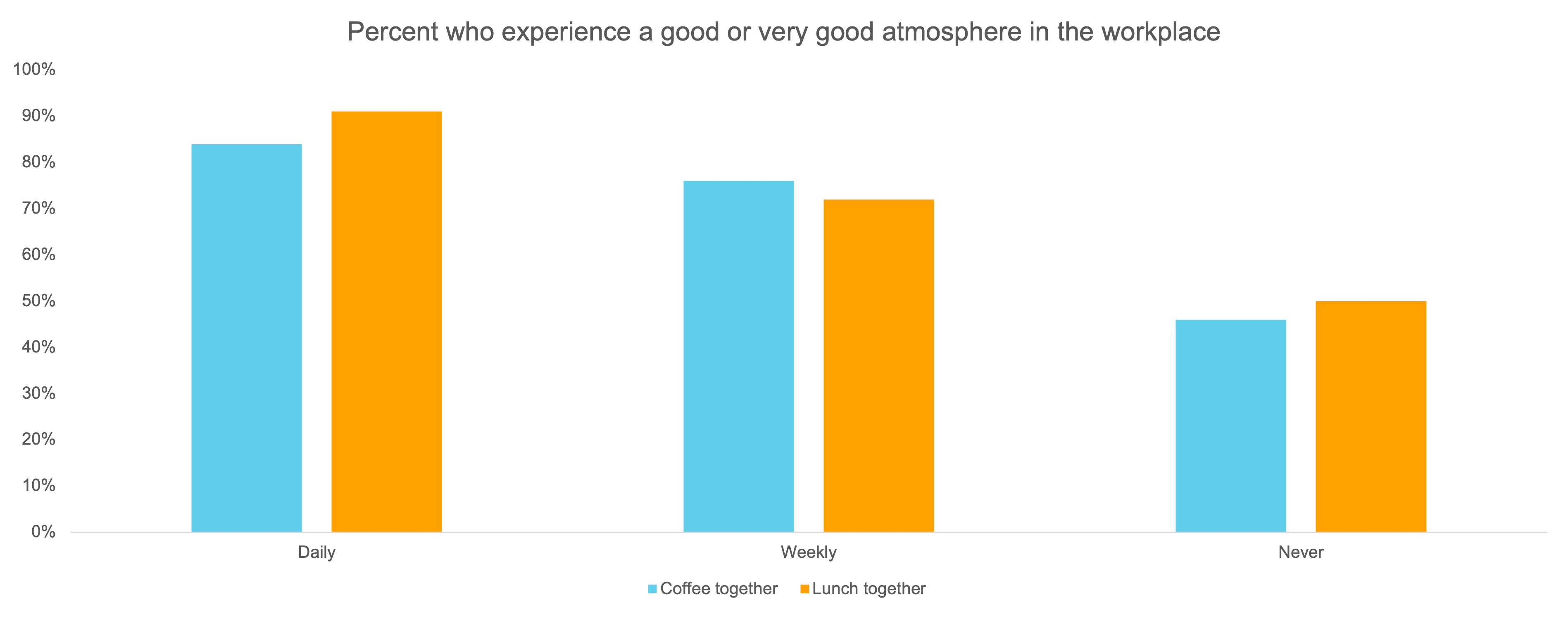Future Barometer: Coffee for the future?
We see a sluggish plateau in optimism for the future in this month's Future Barometer – but things look brighter for some than others. In this survey, we've looked at how we eat in the workplace, linked to Kairos Future's insights on food.
First, let’s see what the Future Barometer looks like in general.
Future Index: Calmer situation, but things need to improve
Not much has happened in the future index since August – the summer showed some improvements compared to the spring, and there is a slight downward movement over the past month. The drop is small, and mainly depends on the outlook looking a little worse over a ten-year perspective. However, not much has happened in the here and now – the atmosphere in the workplace remains quite good, more organizations are planning to increase their workforce than reduce it, and the future of the industry remains looking OK. It is mostly the political situation in the world that is causing problems, although the small world is relatively safe for now – although there is of course a lot of room for improvement. If things get brighter in the wider world, we can perhaps hope that the situation for our own industry and organization will also look better.

Figure 1. Future index - an overall picture of optimism for the future, in terms of one's own organization, industry, and the world at large.
Fika promotes positivity
Fika or the coffee break is a Swedish institution and something we are proud of, which is also visible in the Future Barometer. Only a small minority have no communal coffee at the workplace – just under a tenth. Most workplaces have some form of gathering around the campfire (or coffee pot rather) at least once a month, but over a third of Swedish organizations have a shared coffee daily, assuming that the respondents in our network are representative. What is cause and effect is not clear, but the shared coffee correlates with a better atmosphere in the workplace quite strongly – 84% experience a good atmosphere among those with daily coffee breaks compared to only 45% among those who never have coffee together. It is also noticeable in that over 60% of the respondents believe that joint coffee breaks increase efficiency according to their own opinion. So, take a break together – it improves productivity!
Figure 2. How often do you have coffee together?
Don't rush lunch either
Joint lunches are not quite as common, which is in line with the Swede's self-image – we like to have coffee, but lunch is a little less central. Just 8% state that communal lunches are a daily occurrence, with 30% saying that it happens at least most days. Almost all workplaces have a shared lunch at least once a week – almost no one eats lunch alone as a rule. However, it impacts the atmosphere in the workplace even greater than coffee in this survey: 91% of the organizations where staff eat lunch together every day report a good atmosphere in the workplace. Meals thus have a great impact on both the atmosphere and efficiency. There are good reasons to try to make room in your schedule to eat together, and to make sure it happens regularly.
Figure 3. How good the atmosphere is in the workplace, in organizations where you have coffee or lunch together daily, every week, or never.
So, put on the coffee pot and treat your employees to something delicious today. A little time together around coffee table campfire creates a good atmosphere in the organization.
We want to know how business and public organizations see their future. That is why we have started Kairos Future's Future Barometer, where we through our network Kairos Future Friends with over 21,000 members, predominantly in leading positions, take the pulse of companies and organizations to follow developments. In this survey, 294 people participated.


